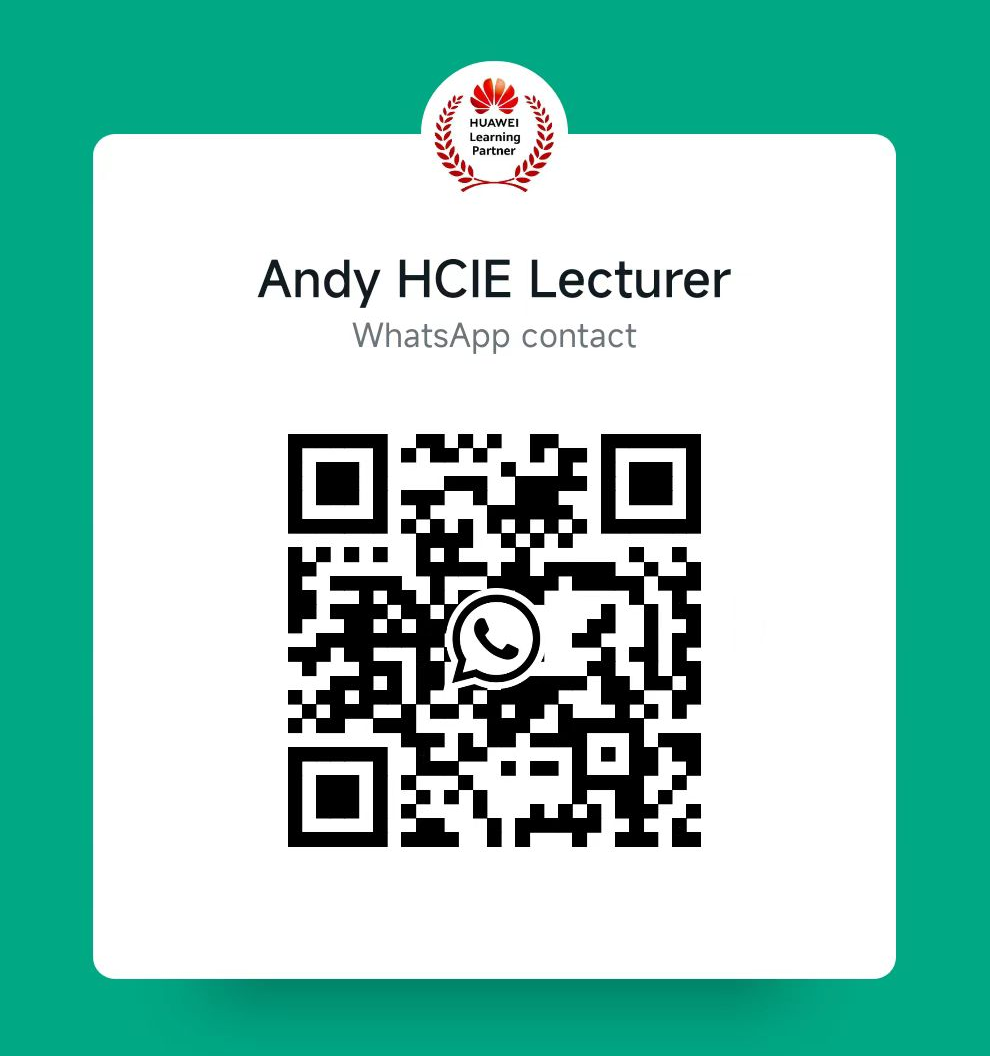How to self-study for CCNA?
Update time:2024-11-07
Earning theCisco Certified Network Associate (CCNA) certification is a great way to start or advance a career in networking. While some opt for formal classes or boot camps, many choose to self-study to save time and money. Self-studying for the CCNA requires discipline, effective resources, and hands-on practice. In this article, we’ll walk you through how to approach self-studying for the CCNA and offer tips to help you succeed.

Step 1: Understand the CCNA Exam Content
The first step in self-studying for the CCNA is to familiarize yourself with the topics covered on the exam. The CCNA certification focuses on a broad range of networking fundamentals, which include:
-Network Fundamentals: Understanding of how networks operate, including OSI models, network topology, and types of networks (LAN, WAN, etc.).
-Routing and Switching: Learning how to configure and troubleshoot routers and switches, key components of most networks.
-IP Services: Working with network services like DNS, DHCP, NTP, and SNMP.
-Security Fundamentals: Implementing basic security features, such as firewalls and access control lists (ACLs).
-IP Connectivity: Configuring IP addressing, subnetting, and static/dynamic routing.
-Automation and Programmability: Introducing automation tools and techniques used in network management today.
To get a full breakdown, Cisco offers aCCNA exam blueprint that lists each topic in detail. This blueprint will help you focus your study efforts.
Step 2: Gather Study Materials
Self-studying for CCNA requires a range of materials, such as textbooks, videos, practice exams, and hands-on tools. Some recommended resources include:
1.CCNA Official Certification Guide:
Written by Cisco experts, this guide covers all the topics on the CCNA exam. It provides explanations, examples, and practice questions. Many learners find it to be a comprehensive and trustworthy resource.
2.Video Tutorials:
Platforms likeUdemy, LinkedIn Learning, and YouTube offer video courses that break down the CCNA topics into digestible segments. Video tutorials are especially helpful for visual learners and those who prefer to follow along with an instructor.
3.Online Forums and Communities:
Join communities likeReddit, Cisco Learning Network, or Stack Overflow where other CCNA aspirants and network professionals discuss study tips, share resources, and offer advice. Engaging with a community can help keep you motivated and provide insights you might not find in textbooks.
4.Network Simulators:
Hands-on experience is key to passing the CCNA exam. Cisco offersPacket Tracer, a free network simulation tool that lets you practice configuring routers, switches, and other network components. Other simulators, likeGNS3 orBoson NetSim, can also help you build your skills.
5.Practice Exams:
Taking practice tests is one of the best ways to prepare for the CCNA exam. Platforms likeBoson, Pearson VUE, or Cisco’s own website provide reliable practice exams that mimic the real test. Regular practice tests will help you identify your strengths and areas that need improvement.
Step 3: Create a Study Plan
Once you’ve gathered your materials, it's essential to create a structuredstudy plan. Since the CCNA covers a wide range of topics, a good plan will help you stay organized and ensure that you cover everything before the exam.
Here’s how you can structure your study plan:
1.Divide Topics:
Break down the CCNA exam topics into smaller sections and focus on one section at a time. For example, you might spend a week studying network fundamentals and another week on routing and switching. This will help you avoid feeling overwhelmed.
2.Set Realistic Goals:
Depending on how much time you can dedicate to studying each day or week, set realistic goals for completing each topic. If you're working full-time, aim to study for1-2 hours a day or6-8 hours over the weekend.
3.Incorporate Practice Labs:
After studying theory, allocate time to practice using network simulators likePacket Tracer. Configure routers, set up networks, and troubleshoot issues. The hands-on experience is crucial because many of the CCNA exam questions require practical knowledge.
4.Review Regularly:
Schedule regular review sessions where you revisit topics you’ve already studied. The more you review, the better you’ll retain the information. Make sure to go over your notes, flashcards, or mind maps during these reviews.
Step 4: Focus on Hands-On Practice
The CCNA exam tests both theoretical knowledge and practical skills, making hands-on experience a critical part of your preparation. Here’s how to incorporate hands-on practice into your self-study routine:
1.Use Packet Tracer or GNS3:
These network simulation tools allow you to practice setting up real-world network scenarios without needing physical routers or switches. Start with simple setups like configuring an IP address on a router, and gradually move on to more complex tasks like VLANs, trunking, or dynamic routing protocols.
2.Build a Home Lab:
If you want even more hands-on experience, consider building ahome lab with used or inexpensive network equipment likeCisco routers, switches, and cables. This will give you an authentic feel for configuring and troubleshooting physical devices.
3.Work on Scenarios:
Create real-life scenarios where you troubleshoot network issues, optimize routing, or secure a network using ACLs. These activities will not only prepare you for the exam but will also give you the skills to handle challenges in a real networking job.
Contact me immediately to get the golden key helping you fast express your certificate.
Step 5: Take Practice Tests
One of the best ways to gauge your readiness for the exam is by takingpractice tests. Practice exams help you identify areas that need more attention, get accustomed to the question format, and manage your time effectively during the real test.
1.Start Early:
Begin taking practice exams after you’ve studied a few topics. This will help you monitor your progress. Don’t wait until the last minute to start testing yourself.
2.Simulate Real Exam Conditions:
Try to replicate the exam environment by taking a full practice test in one sitting, under timed conditions. The CCNA exam is120 minutes long and consists ofmultiple-choice, drag-and-drop, and simulation questions.
3.Analyze Results:
Review the results of your practice tests thoroughly. Pay special attention to the questions you got wrong and revisit those topics in your study plan.
Step 6: Stay Consistent and Motivated
Self-studying for the CCNA requires discipline and consistency. It’s easy to lose motivation, especially when studying alone. Here are some tips to stay on track:
1.Join Study Groups:
If possible, join or create a virtual study group with other CCNA aspirants. Sharing progress, asking questions, and discussing concepts with others can help keep you motivated and accountable.
2.Set Milestones:
Break your study plan into smaller milestones, such as completing a chapter or mastering a specific lab configuration. Reward yourself when you hit these milestones to stay motivated.
3.Track Your Progress:
Keep a log of the topics you’ve studied, the labs you’ve completed, and the practice exams you’ve taken. Seeing your progress on paper will encourage you to keep going.
Conclusion
Self-studying for theCCNA is a challenging but achievable goal. By using a variety of resources, creating a structured study plan, practicing hands-on labs, and taking regular practice exams, you can successfully prepare for the CCNA exam on your own. With dedication and consistency, you’ll be ready to earn your CCNA certification and open the door to new career opportunities in networking.
I'm your man who have the 100% valid dumps , buy it now for 50% off to clear your exam!
Click it ↓↓

Step 1: Understand the CCNA Exam Content
The first step in self-studying for the CCNA is to familiarize yourself with the topics covered on the exam. The CCNA certification focuses on a broad range of networking fundamentals, which include:
-Network Fundamentals: Understanding of how networks operate, including OSI models, network topology, and types of networks (LAN, WAN, etc.).
-Routing and Switching: Learning how to configure and troubleshoot routers and switches, key components of most networks.
-IP Services: Working with network services like DNS, DHCP, NTP, and SNMP.
-Security Fundamentals: Implementing basic security features, such as firewalls and access control lists (ACLs).
-IP Connectivity: Configuring IP addressing, subnetting, and static/dynamic routing.
-Automation and Programmability: Introducing automation tools and techniques used in network management today.
To get a full breakdown, Cisco offers aCCNA exam blueprint that lists each topic in detail. This blueprint will help you focus your study efforts.
Step 2: Gather Study Materials
Self-studying for CCNA requires a range of materials, such as textbooks, videos, practice exams, and hands-on tools. Some recommended resources include:
1.CCNA Official Certification Guide:
Written by Cisco experts, this guide covers all the topics on the CCNA exam. It provides explanations, examples, and practice questions. Many learners find it to be a comprehensive and trustworthy resource.
2.Video Tutorials:
Platforms likeUdemy, LinkedIn Learning, and YouTube offer video courses that break down the CCNA topics into digestible segments. Video tutorials are especially helpful for visual learners and those who prefer to follow along with an instructor.
3.Online Forums and Communities:
Join communities likeReddit, Cisco Learning Network, or Stack Overflow where other CCNA aspirants and network professionals discuss study tips, share resources, and offer advice. Engaging with a community can help keep you motivated and provide insights you might not find in textbooks.
4.Network Simulators:
Hands-on experience is key to passing the CCNA exam. Cisco offersPacket Tracer, a free network simulation tool that lets you practice configuring routers, switches, and other network components. Other simulators, likeGNS3 orBoson NetSim, can also help you build your skills.
5.Practice Exams:
Taking practice tests is one of the best ways to prepare for the CCNA exam. Platforms likeBoson, Pearson VUE, or Cisco’s own website provide reliable practice exams that mimic the real test. Regular practice tests will help you identify your strengths and areas that need improvement.
Step 3: Create a Study Plan
Once you’ve gathered your materials, it's essential to create a structuredstudy plan. Since the CCNA covers a wide range of topics, a good plan will help you stay organized and ensure that you cover everything before the exam.
Here’s how you can structure your study plan:
1.Divide Topics:
Break down the CCNA exam topics into smaller sections and focus on one section at a time. For example, you might spend a week studying network fundamentals and another week on routing and switching. This will help you avoid feeling overwhelmed.
2.Set Realistic Goals:
Depending on how much time you can dedicate to studying each day or week, set realistic goals for completing each topic. If you're working full-time, aim to study for1-2 hours a day or6-8 hours over the weekend.
3.Incorporate Practice Labs:
After studying theory, allocate time to practice using network simulators likePacket Tracer. Configure routers, set up networks, and troubleshoot issues. The hands-on experience is crucial because many of the CCNA exam questions require practical knowledge.
4.Review Regularly:
Schedule regular review sessions where you revisit topics you’ve already studied. The more you review, the better you’ll retain the information. Make sure to go over your notes, flashcards, or mind maps during these reviews.
Step 4: Focus on Hands-On Practice
The CCNA exam tests both theoretical knowledge and practical skills, making hands-on experience a critical part of your preparation. Here’s how to incorporate hands-on practice into your self-study routine:
1.Use Packet Tracer or GNS3:
These network simulation tools allow you to practice setting up real-world network scenarios without needing physical routers or switches. Start with simple setups like configuring an IP address on a router, and gradually move on to more complex tasks like VLANs, trunking, or dynamic routing protocols.
2.Build a Home Lab:
If you want even more hands-on experience, consider building ahome lab with used or inexpensive network equipment likeCisco routers, switches, and cables. This will give you an authentic feel for configuring and troubleshooting physical devices.
3.Work on Scenarios:
Create real-life scenarios where you troubleshoot network issues, optimize routing, or secure a network using ACLs. These activities will not only prepare you for the exam but will also give you the skills to handle challenges in a real networking job.
Contact me immediately to get the golden key helping you fast express your certificate.
Step 5: Take Practice Tests
One of the best ways to gauge your readiness for the exam is by takingpractice tests. Practice exams help you identify areas that need more attention, get accustomed to the question format, and manage your time effectively during the real test.
1.Start Early:
Begin taking practice exams after you’ve studied a few topics. This will help you monitor your progress. Don’t wait until the last minute to start testing yourself.
2.Simulate Real Exam Conditions:
Try to replicate the exam environment by taking a full practice test in one sitting, under timed conditions. The CCNA exam is120 minutes long and consists ofmultiple-choice, drag-and-drop, and simulation questions.
3.Analyze Results:
Review the results of your practice tests thoroughly. Pay special attention to the questions you got wrong and revisit those topics in your study plan.
Step 6: Stay Consistent and Motivated
Self-studying for the CCNA requires discipline and consistency. It’s easy to lose motivation, especially when studying alone. Here are some tips to stay on track:
1.Join Study Groups:
If possible, join or create a virtual study group with other CCNA aspirants. Sharing progress, asking questions, and discussing concepts with others can help keep you motivated and accountable.
2.Set Milestones:
Break your study plan into smaller milestones, such as completing a chapter or mastering a specific lab configuration. Reward yourself when you hit these milestones to stay motivated.
3.Track Your Progress:
Keep a log of the topics you’ve studied, the labs you’ve completed, and the practice exams you’ve taken. Seeing your progress on paper will encourage you to keep going.
Conclusion
Self-studying for theCCNA is a challenging but achievable goal. By using a variety of resources, creating a structured study plan, practicing hands-on labs, and taking regular practice exams, you can successfully prepare for the CCNA exam on your own. With dedication and consistency, you’ll be ready to earn your CCNA certification and open the door to new career opportunities in networking.
I'm your man who have the 100% valid dumps , buy it now for 50% off to clear your exam!
Click it ↓↓














